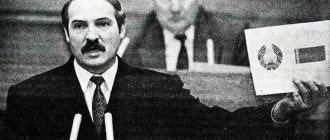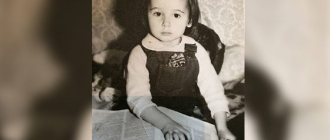Childhood and youth
Simon Petlyura was born in Poltava in 1879 into a large family. His father worked as a cab driver, the Petliurs lived poorly. In his youth, the young man prepared to become a priest, first receiving his primary education at a church school, then studying at the city seminary. He was expelled from his final year for his passion for political journalism. Self-taught Petliura wrote hundreds of fascinating articles on various topics in his short life.
Simon Petliura in his youth
At the age of 21, the young man joined the Revolutionary Ukrainian Party, in 1903 he moved to Lviv, working as a journalist in the publications “Slovo”, “Peasant”, “Good News”. The frequent change of publishing houses is associated with the revolutionary spirit of the young man; moreover, his views often became too radical for liberal newspapers and magazines.
In 1908, Simon managed to move to Moscow, rent a room near the city university - he sometimes went there as a volunteer. Petlyura makes a living from journalism: he writes articles and writes about the history of Little Russia in the famous magazine “Slovo”.
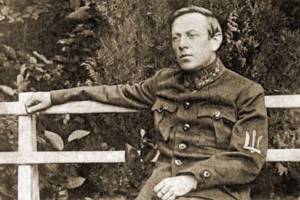
Simon Petliura in Kamenets-Podolsk
In his free time from work, he studies the history of his native country: his erudition allows him to enter the circle of Little Russian intellectuals, where he meets the historian Mikhail Grushevsky. His social circle allowed the provincial Petlyura, despite the lack of higher education, to become an educated person. It was Grushevsky who helped Simon take the first steps towards fleeting dictatorial glory, initiating him into the Masonic lodge.
Politics and war
During the First World War, Petliura served as deputy commissioner of the All-Russian Union of Zemstvos and Cities, dealing with supplies to the Russian army. There, for the first time, civilian Simon tried on a military uniform: paramilitary activities brought him closer to the front and allowed him to conduct political propaganda in the Ukrainian ranks.
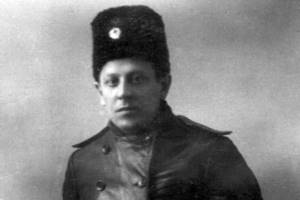
Simon Petlyura in military uniform in 1915
The revolution of 1917 found Simon in Belarus, on the Western Front. Petlyura manages to get into the whirlpool of events related to the national liberation movement in Ukraine, the man becomes one of the leading figures in Ukrainian politics. In June, Simon was appointed secretary of military affairs of the first Ukrainian government, headed by Vladimir Vinnychenko.
The position was soon abolished, but Petliura continues to form regiments and battalions on a voluntary basis, despite the fact that Vinnychenko has repeatedly stated the futility of creating a Ukrainian army. In December 1918, troops formed by Petliura occupied Kyiv. On the 15th he took power, but his reign lasted 45 days. On the night of February 2, Simon fled the country.
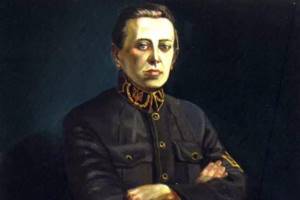
Portrait of Simon Petliura
Once in power, Petliura had virtually no experience of actually leading people. His policy in recent years was aimed only at seizing power, then he hoped for help from European rulers. But Paris and London had no time for Kyiv in those days; they divided the territories after the end of the First World War. After welcoming speeches and banquets, Simon was in confusion: how to govern the country?
One day the ruler proclaimed the capitalization of commercial banks, and a couple of days later he canceled the decisions. During his short government, he emptied the treasury in the hope of financial and military European assistance. Meanwhile, the anarchists were approaching Kyiv, and the Red Army was advancing from the east. Fearing dictatorship, the cornered ruler fled Kyiv and “sank to the bottom” for several years.
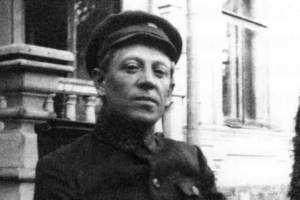
Simon Petliura
In March 1921, after the Treaty of Riga was signed, Petliura immigrated to Poland. In 1923, the Soviet Union demanded that Polish officials extradite Petlyura, so Simon fled first to Hungary, from there to Austria, then to Switzerland, and in 1924 he ended up in France.
What did Simon Petlyura fight for? Why did he lose? Stories post (13 photos)
Author: curcha
20 March 2021 13:05
Tags: civil war, civil war in Russia, history
6298
13
All that is known about Petliura is that he was a Ukrainian nationalist and an anti-Semite, he fought against the Whites, Reds, Makhnovists, German invaders and ended his life in exile...
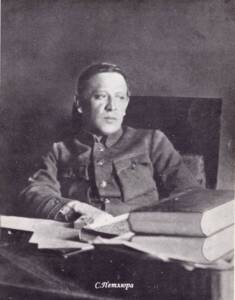
0
See all photos in the gallery
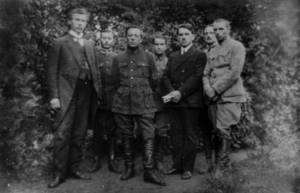
0
Petlyura was born in 1879 in Poltava, into a poor family of a city cab driver, although he later claimed that he came from an old Cossack family. Smart, ambitious, assertive, he managed to enter the Poltava Theological Seminary - the same one from which the notorious priest Georgy Gapon graduated a few years before him. However, young Simon did not study the acts of the Holy Fathers for long. He was soon expelled for participating in the Ukrainian nationalist underground. From his youth, Petliura became an ardent enemy of Russia and considered Hetman Mazepa his spiritual father. Years will pass and he will repeat the path of his spiritual father. Mazepa did not even dream of an independent Ukraine, but simply believed that a more profitable owner could be found than the Russian Tsar. And he looked for patrons, either Swedes or Turks.
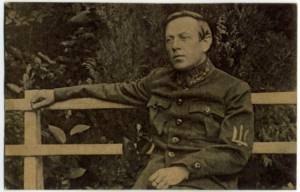
0
Petliura fought for an independent Ukrainian state, but ended up the same way - he began to seek protection from the Austrians, later from the Germans, British, French, and even from the Poles who hated him as a Ukrainian nationalist. The Ukrainian nationalist movement was created in Austrian Galicia (now the Lviv region) by Austro-German intelligence services exclusively for anti-Russian purposes. Naturally, when the Russian authorities became interested in Simon Vasilyevich, he fled there, to the center of the conspirators - the Austrian-Polish city of Lemberg (now Lvov). There he was taught how to conduct subversive work against the Russian state and was sent back.
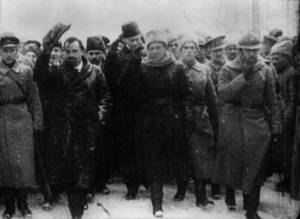
0
Having returned, Simon Vasilyevich quietly works as an accountant, and meets the turmoil of 1905 as a member of the Ukrainian Social Democratic Labor Party, which took an extremely nationalist position. Together with his fellow party members, he advocates for the immediate creation of a “Great Ukraine” from the Dniester to the Kuban (a detachment of Zaporozhye Cossacks was resettled to the Kuban under Catherine II). At the same time, the modest office worker began actively writing for Ukrainian nationalist newspapers, which allowed some biographers who sympathized with him to call him a journalist. However, now, and even before, Petliura’s admirers are not too fond of quoting his works: the writing is difficult, there are many mistakes and politically imprudent judgments. Petlyura did not accomplish any revolutionary feats at that crazy time, unlike the same Nestor Ivanovich Makhno. He shot and blew up, and was sentenced to death by a military court.
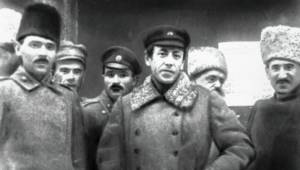
0
During the post-revolutionary break, Petlyura moved to Moscow and got a job as a cashier at the Rossiya insurance company (remarkable: he hated Russia, but served in Rossiya). He continued to publish nationalist literature, participated in the work of underground Ukrainian circles, but on the whole he lived quietly and did not appear before the tsarist secret police. The First World War began, and the country was gripped by patriotic enthusiasm. The time has come for anti-Russian propaganda; and Simon Vasilyevich immediately announced in his newspaper that it was wrong to accuse Ukrainian nationalists of being pro-Austrian. He even called on the Little Russians to “fulfill the duty of Russian citizens” in the trenches.
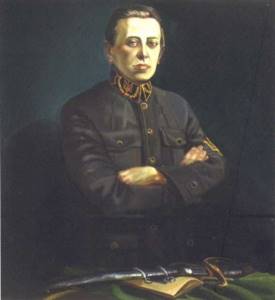
0
Soon Petliura was drafted into the army, but he happily avoided being sent to the front, first ending up in the rear services, and then settling in the “Union of Zemstvos and Cities”, where he even made a short career. There he worked throughout the war, traveling around the country and making the necessary connections. After the February Revolution, Petlyura founded and headed the Ukrainian Front Committee, and in May 1917 he was elected to the All-Ukrainian Military Committee of the Central Rada (Kyiv). After some time, he becomes the chairman of this committee. Later he was elected Minister of War of the General Secretariat of the Ukrainian People's Republic (UNR). In the fall of 1918, Petlyura became the commander (chief ataman) of the UPR troops. Thus, Simon Petlyura, having received neither military education, nor experience of command, nor experience of service in the ranks, even as a private, becomes commander-in-chief.
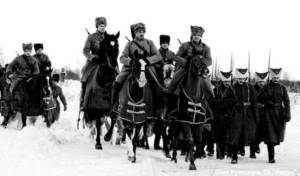
0
The actions of the Petliura army, with the exception of the initial stage, were extremely unsuccessful. The Ukrainian commander-in-chief suffered defeats on virtually all fronts of civil war-ridden Ukraine. Petliura was beaten by the Whites, the Reds, the Makhnovists, and the rebel atamans. It's all about training the rank and file. They took everyone and everything into the army. From hunger and cold, people were ready to fight for anyone, as long as they were warm and well-fed. Apart from the radical “USS” (Ukrainian Sichev Riflemen), there were few competent military personnel in Petliura’s army. And, in principle, thanks to the same USS, his army held out for so long. In October 1919, the Petliurists were defeated by Denikin (Denikin himself saw Petlyura as a great threat, comparing him with the Bolshevik threat), then they were defeated by the Red Army. The remnants of Petliur's army fled to Polish territory. Here Simon Vasilievich remembered that he was a social democrat, and concluded the so-called Warsaw agreement with another social democrat, Pilsudski.
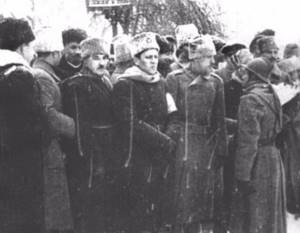
0
During the Soviet-Polish war, the Poles, together with Petliurist detachments, launched an attack on Ukrainian lands. On May 6, 1920, they captured Kyiv, but in June they were expelled from Ukraine by the Red Army. Petlyura’s attempt to conclude an agreement (with the whites he hated) Wrangel on joint actions against the Bolsheviks failed. After the liquidation of Wrangel’s group in Crimea in November 1920, the Red Army also defeated the Petliurists. Simon Vasilyevich again found himself in exile.
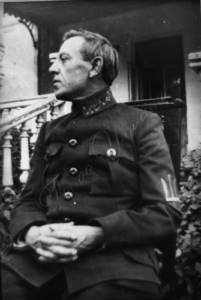
0
In Poland, Petliura tried to fight against Soviet power, proving in numerous articles that for Ukrainians there was no difference between Tsarist Russia and Communist Russia. But the Poles lost interest in Petliura and, not wanting to spoil relations with Soviet Russia, expelled him from Poland.
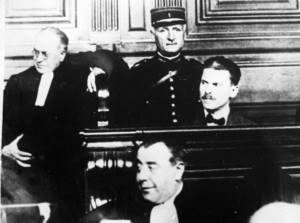
0
On May 25, 1926, Petliura was assassinated in Paris by a Russian Jew named Schwartzbard. Makhno's widow Galina Kuzmenko told me that Schwarzbard was a watchmaker, was a member of one of the Jewish anarchist groups, and even knew Nestor Ivanovich himself.
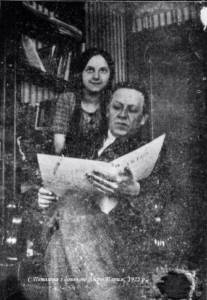
0
The last years before his death, forty-seven-year-old Simon Vasilyevich Petliura lived modestly, quietly, moving away from all political activities, trying not to attract the attention of others. He knew that OGPU agents were constantly watching him. There had already been multiple attempts on his life, and so he acquired a heavy cane with a metal knob, constantly changed places of residence, and in the fall of 1924 he came to Paris. In March 1925, he rented a modest room in a small, cheap hotel in the Latin Quarter, where he settled with his wife and young daughter.
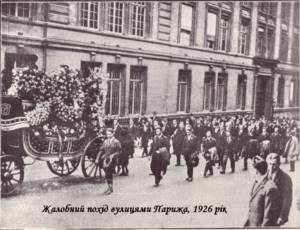
0
On the street, Simon Vasilyevich, as a rule, was always in the company of his wife and dined at home. But on May 25, 1926, contrary to his rules, he dined at a small restaurant on the Boulevard Saint-Michel. In all likelihood, someone made an appointment for him there, but he didn’t show up. When Petlyura left the restaurant, a stranger of about forty approached him almost running. - Pan Petliura? - he asked. And then he fired a pistol several times at point-blank range. Several bullets hit Petlya in the chest and one in the head. The former chief ataman of the Ukrainian army never had time to use his cane. Drenched in blood, he fell onto the asphalt. A policeman came running to hear the shots. The killer did not even try to escape from the crime scene. With the words: “I killed the great murderer!” - He handed the pistol to the policeman and resignedly followed to the police station.

0
Who Simon Petliura really was: a fighter for the national idea or a person striving for power, decide for yourself.
Source:
More cool stories!
- A girl from Novosibirsk went fishing with a bear
- Five interesting facts about everything in the world
- Red film, fantastic story
- Cartoon "Bremen Town Musicians" - a masterpiece without awards
- People clearly did not expect such mean things from nature!
Tags: civil war, civil war in Russia, history
Did you like the post? Support Chips, click:
21 32 -11
Did not like
-11 1
19
Partner news
Personal life
In 1908, in Moscow, at a meeting of the Ukrainian community, Simon met a young student, Olga Belskaya. Common views and origins brought the young people together; Petliura tried to visit Moscow as often as possible. In 1910 they began to live in a civil marriage, five years later Olga and Simon officially signed and got married.
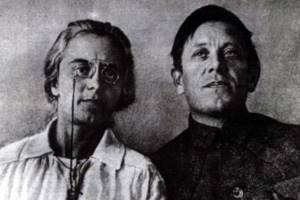
Simon Petlyura and his wife Olga
In 1911, the student realized that she was expecting a child. Olga's parents, strict people of conservative views, learned about the birth of their granddaughter only a few months later - the girl was so afraid of the reaction of her relatives. Olya went to Kyiv to give birth; having grown stronger after childbirth, she returned to Moscow, to Simon. From then until the death of Petliura, the couple did not part.
His wife Olga is probably Petlyura’s only woman. He was modest and embarrassed to communicate with ladies. Simon's further biography shows that the man is monogamous, and politics became the meaning of life for him.
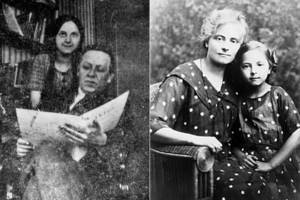
Simon Petliura with his wife and daughter
Lesya Petliura inherited her father’s literary talent and became a poet. Her life was short: at the age of 30, in 1941, she died of tuberculosis in Nazi-occupied Paris. Lesya had no children. Simon's sister and nephews, who remained in Ukraine, were repressed and executed in 1937, rehabilitated in 1989.
How Petliura betrayed Western Ukraine
In February 1919, Symon Petlyura reaches the pinnacle of his political career - he becomes Chairman of the Directory of the UPR, concentrating in his hands both military and civil power in Ukraine. The Directory declared war on the RSFSR, but by April 1919 it was defeated. Denikin’s offensive saved the Petliurists from complete destruction , but the Whites did not seek allied relations with the Ukrainian nationalists.
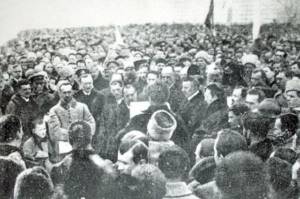
What is the Evil Act? More details
In January 1919, the so-called “Zluka Act” was signed - a document on the unification of the Ukrainian People's Republic and the Western Ukrainian People's Republic. Representatives of the Western Ukrainian People's Republic counted on Petlyura's help in the fight against the Poles, but in fact no such assistance was provided. And at the end of 1919, the “Act” was actually denounced after representatives of the Western Ukrainian People's Republic caught Petliura in negotiations with the Poles.
Petlyura himself was not embarrassed by this. In April 1920, he signed an agreement with Poland on joint actions against the Red Army. The condition of this agreement was the recognition of the entry of Galicia and Volyn into Poland.
Simon Petlyura and Jozef Pilsudski. Vinnitsa. 1920 Photo: Public Domain
Petliura betrayed his fellow tribesmen, hoping that at such a price he could buy power for himself. But the Soviet-Polish war did not end at all as he expected. The Treaty of Riga, signed in March 1921, recognized the existence of the Ukrainian SSR, and not the UPR.
Death
Petlyura died on May 25, 1926, the cause of death was seven bullet wounds. The murder should have happened 15 days earlier. On May 10, Simon celebrated his birthday in a restaurant and did not even realize that at the next table the bandit Nestor Makhno was convincing NKVD agent Samuil Schwartzbard not to touch Petliura. There were times when Simon saved Nestor from his own “colleagues” who suspected the leader of being corrupt, and he tried to repay the favor.
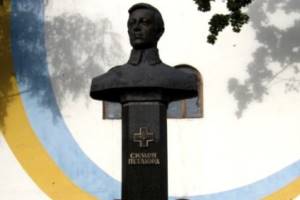
Monument to Simon Petliura
Makhno was only able to delay the reprisal against the head of the UPR government: on May 25, Schwartzbard shot Petlyura in the doorway of a bookstore on Racine Street. The criminal was immediately detained by the police; he did not try to hide or deny, saying that he dealt with Simon out of revenge because of the Jewish pogroms he organized in 1918-1920. The Ukrainian politician was buried in the Parisian cemetery de Montparnasse.
The murderer was acquitted by the jury at trial. Only in 1954, former KNB employee Pyotr Deryabin testified to Congress that the murder was a contract killing, initiated by the NKVD. His wife Olga lived to see this news and died in 1959.
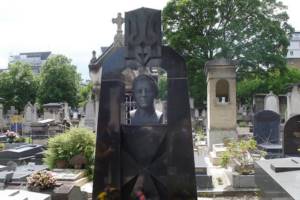
Symon Petliura's grave
In 2021, Ukrainian director Oles Yanchuk released the documentary drama “The Secret Diary of Symon Petliura,” which tells about the last stage of the politician’s life and his death. The director and producer set out to tell the younger generation the truth about the events of that time; the film was financed by the state.
Memory
- May 16, 2005 - A decree was signed to perpetuate the memory of Symon Petlyura, as well as to install monuments in Kyiv and other cities of Ukraine, and to name individual military units after him;
- streets in the following cities are named in honor of Petlyura: Lviv, Rivne, Ternopil, Ivano-Frankivsk, Shepetivka;
- February 11, 2008 - The Kyiv City Administration Commission on Names and Memorial Signs decided to rename one of the streets in Kyiv to Simon Petlyura Street;
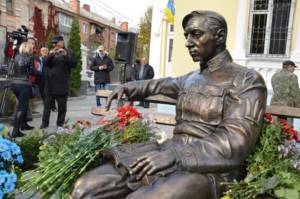
Monument to Simon Petliura in Vinnitsa
- June 16, 2009 - The Kiev City Council Commission on local self-government, regional, international relations and information policy recommended that the Kiev City Council rename Comintern Street in the Shevchenkovsky district of the capital to Simon Petlyura Street;
- May 29, 2009 - The National Bank of Ukraine introduced into circulation a commemorative coin with a face value of 2 hryvnia “Simon Petlyura”;
- October 14, 2021 – a monument to Simon Petliura was unveiled in Vinnitsa, a postage stamp with his photo was issued.
From supplier to minister of war
At the beginning of 1916, Petlyura entered the service of the All-Russian Union of Zemstvos and Cities, created in 1914 to help the government of the Russian Empire organize supplies for the army. On the one hand, Petlyura wore a military uniform and acquired the necessary connections in the army, on the other hand, he was not in danger of ending up on the front line.
Actually, it was the status of a military supply that gave the start to Simon Petlyura’s career. After the fall of the monarchy in February 1917, he moved to Kyiv, took part in the First All-Ukrainian Military Congress, where he became a member of the presidium from the socialists.
A rally during the III Military Congress. Kyiv. November 2, 1917 Photo: Public Domain
Petlyura's oratorical abilities allowed him to gain popularity among the soldiers. His weight in Ukrainian politics grew rapidly. He becomes the chairman of the Ukrainian General Military Committee, which is involved in the formation of the national army.
When in the summer of 1917 the Central Rada of Ukraine announced the creation of the highest executive body - the General Secretariat, Petliura took over the post of Secretary General for Military Affairs.
1st General Secretariat. Photo: Public Domain



